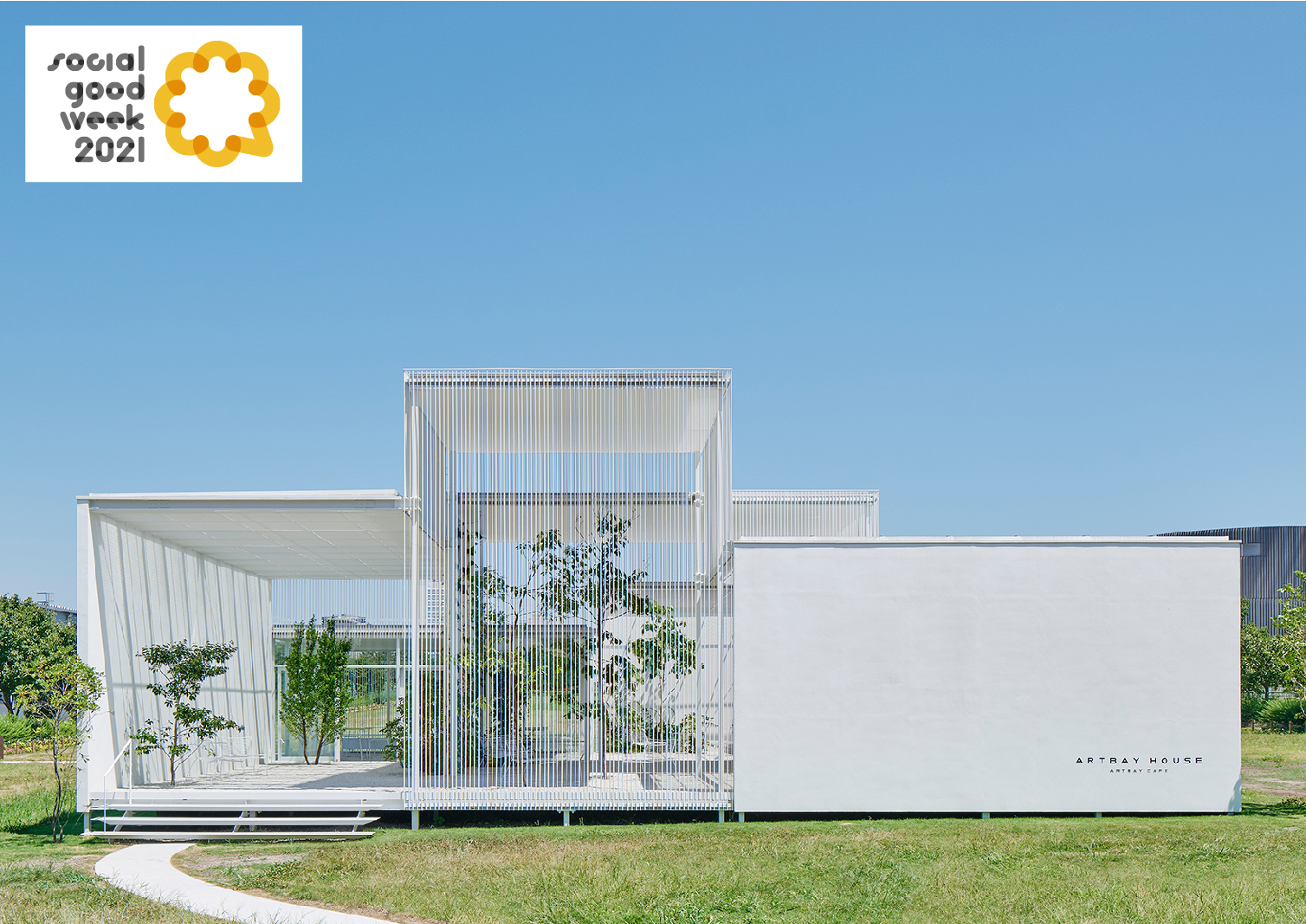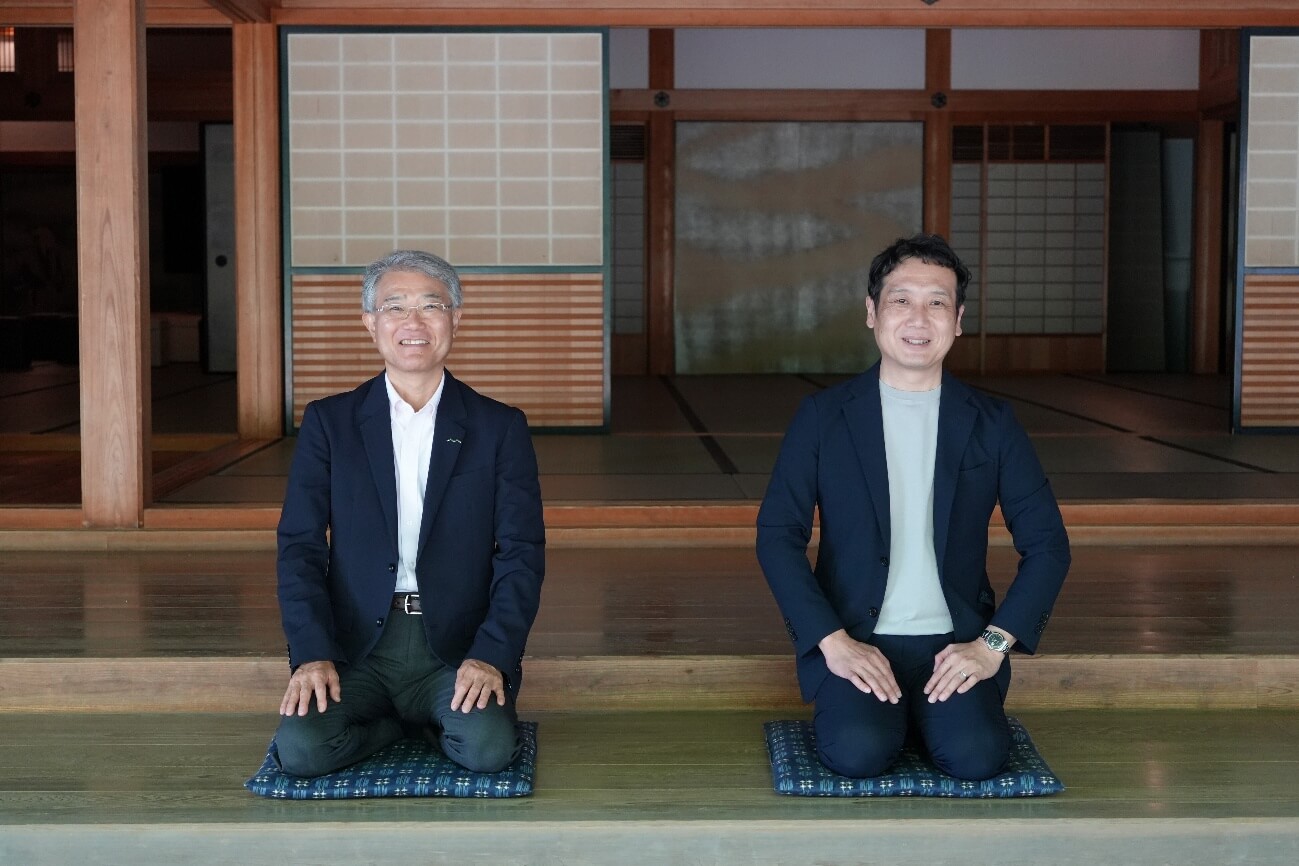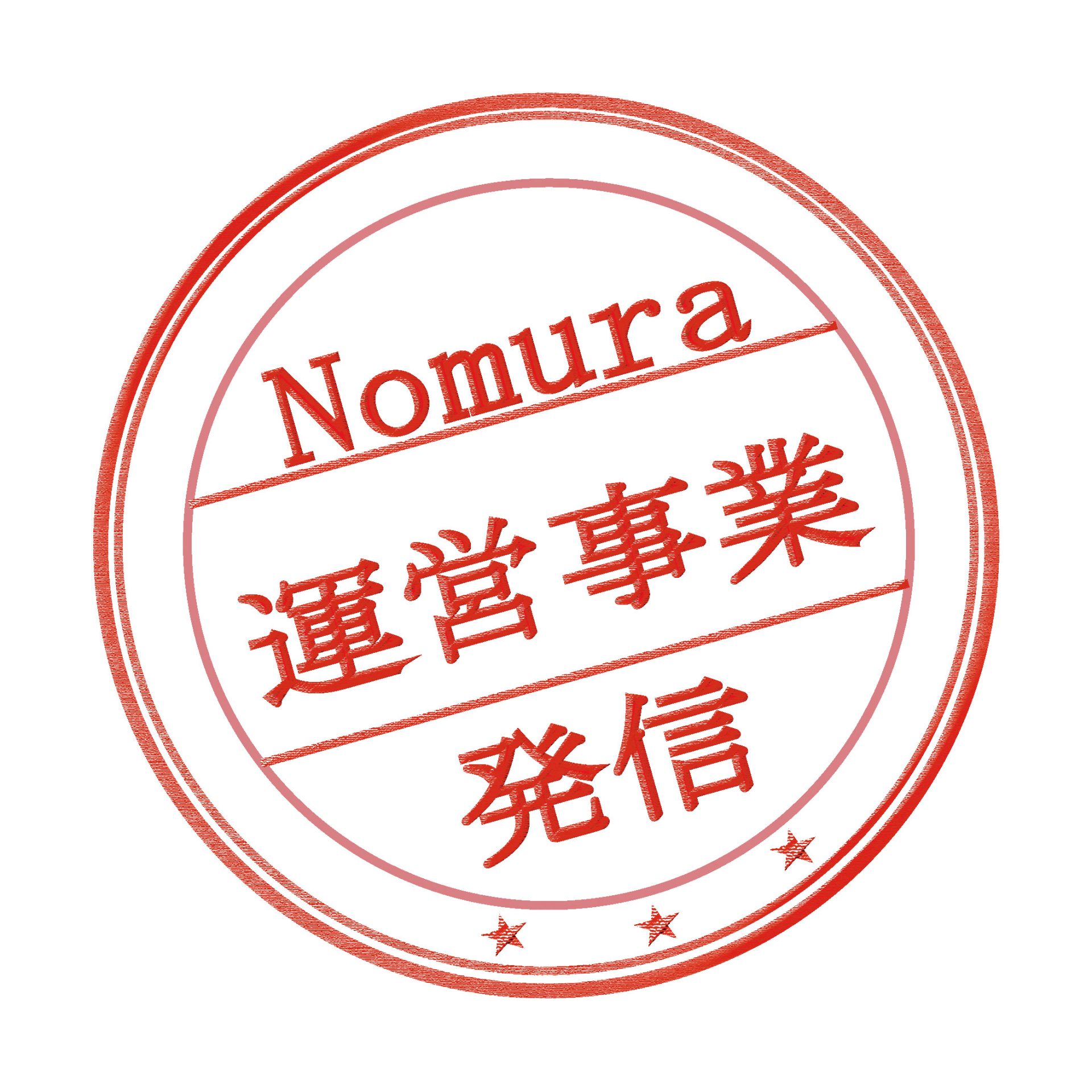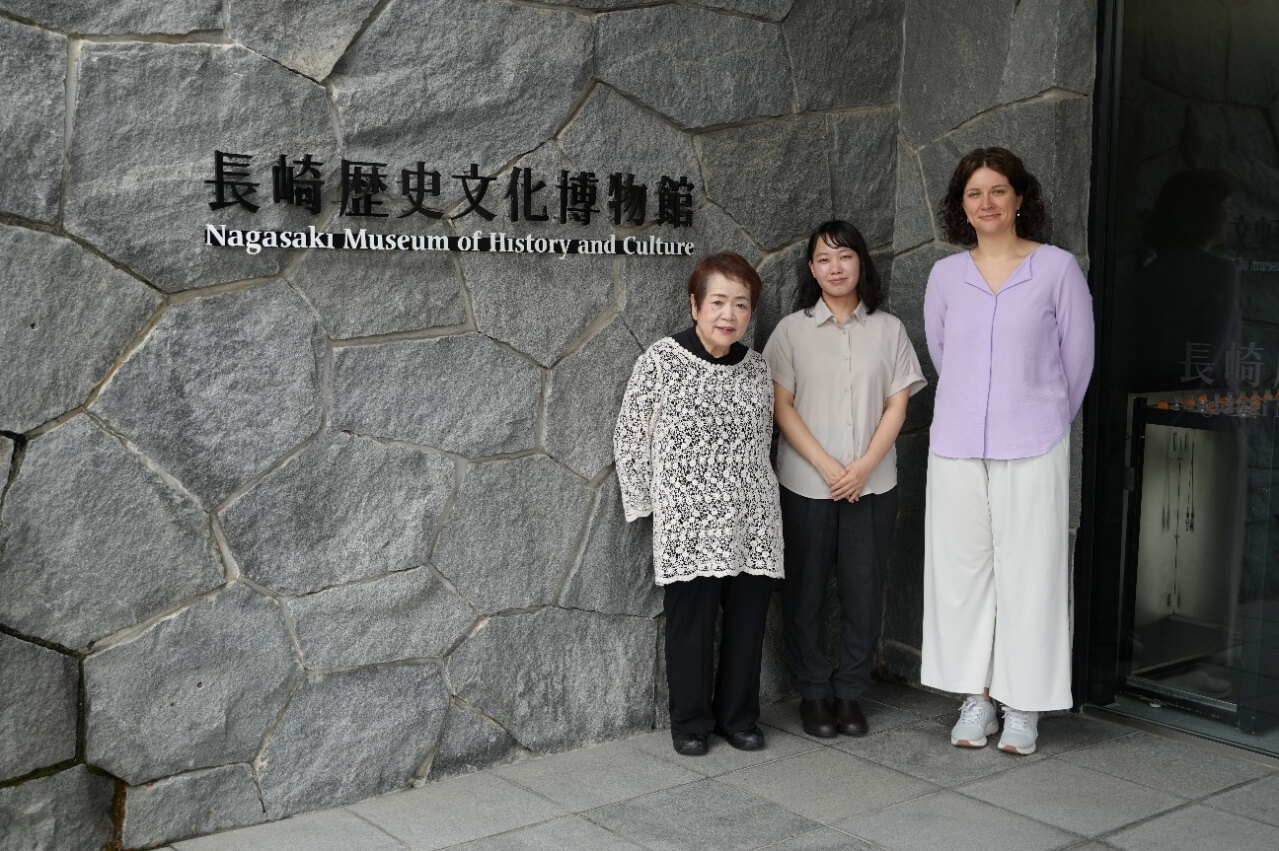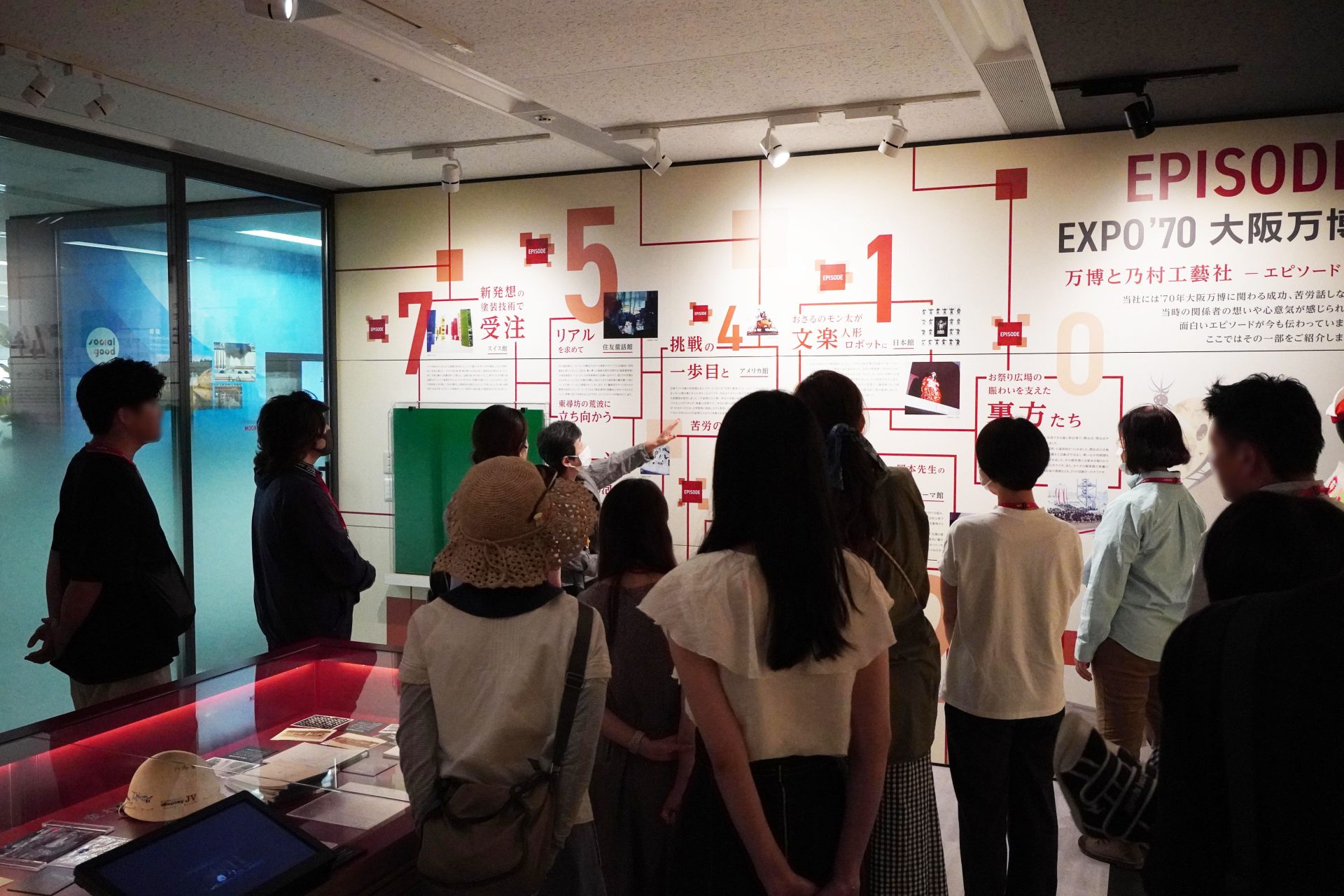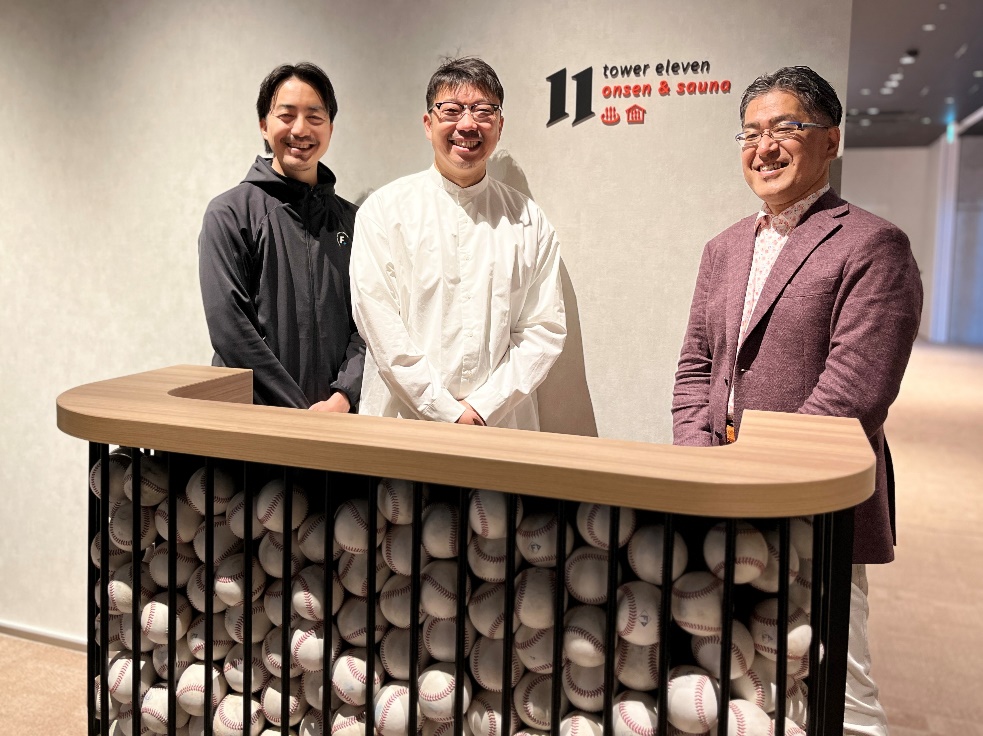- text and edit by
- ノムログ編集部
“お台場”と総称される臨海副都心は、商業施設、企業、展示場、公園などさまざまな機能をもつ街です。この440haを超える広大な“まち”をアートによってつなぎ、新しい魅力をつくりだすのがARTBAY TOKYOプロジェクトです。このセッションでは、プロジェクトの拠点となるアートパビリオン「ARTBAY HOUSE」を企画・設計した建築家の萬代基介さんをお招きし、グランドデザインを担当した乃村工藝社プランナーの杉本とともに、アートによるまちづくりの可能性について話し合いました。

本稿は、乃村工藝社グループの「ソーシャルグッド」なプロジェクトをご紹介するイベント「ソーシャルグッドウィーク 2021」のレポート記事です。
*「ソーシャルグッド」の詳細はこちら
乃村工藝社グループが考えるソーシャルグッド(前編/後編)
*「ソーシャルグッドウィーク2021」のレポート記事一覧はこちら
臨海副都心ARTBAY TOKYO

萬代基介さん 建築家
1980年神奈川県生まれ。2003年東京大学工学部建築学科卒業、2005年東京大学大学院工学系研究科建築学専攻修士課程修了。2005年から石上純也建築設計事務所に勤務。2012年に独立して萬代基介建築設計事務所を設立。2012年から2015年まで横浜国立大学院Y-GSA設計助手。主な受賞に、DSA空間デザイン大賞、JCDデザインアワード金賞など。

杉本たく 乃村工藝社 プランニング統括部
1988年京都府生まれ。東京工業大学工学部建築学科卒業、スイス連邦工科大学チューリッヒ校留学。国際機関等の勤務を経て乃村工藝社入社。入社後は主に大規模都市開発案件やまちづくりのプロジェクトに携わる。主な受賞に、グッドデザイン賞ベスト100。
臨海副都心の魅力をアートでさらに高める

杉本
最初に ARTBAY TOKYOプロジェクトについてご説明すると、440haの広さがある臨海副都心を5つのエリアに区分し、それぞれのエリアをアートによってつなぎ、より魅力的なまちにしていこうというプロジェクトです。乃村工藝社グループは、5つのエリアの特性やそれぞれのエリアに合ったアートの在り方を調査し、全体構想を練る、いわゆるグランドデザインを担当しました。

調査をする中で、臨海副都心の課題をいくつか抽出できました。一つ目が、長大なスケールの道や建物です。新しいまちなので道幅も広く、建物も大きく、人のサイズに対しスケール感が巨大で、外部空間で人がゆっくり過ごせる場所が不足していることです。二つ目が、エンターティメント施設や商業施設など多彩な施設がありますが、ここでしか味わえないものが少なく、このまちの魅力を生かしたコンテンツを増やすべきだということ。そして三つ目が来訪者数の鈍化です。今でも年間5000万人以上が訪れていますが、都心では渋谷、池袋、六本木、虎ノ門、さまざまなエリアで都市開発が行われ、人出が分散しています。臨海副都心の魅力を高めていくには、人々に継続的に来訪していただくことが必要です。いままで来訪することがなかった人たちをどう呼び込むかが大きな課題だと認識しました。
そういった課題を踏まえ、グランドデザインの指針として次の3つを掲げました。一つ目が「ヒューマンスケールの居場所づくり」です。広い道や大きな建物に対して、人が心地よく過ごせる場所づくりがこのまちにとって大事であると考えました。二つ目が「臨海副都心らしい実験的なプログラム」です。このまちは、都心部に比べると歴史が浅く、実験的なことを行いやすい土壌があります。三つ目として「集客力と発信力のあるコンテンツ」の必要性です。実験的なプログラムもそうですが、同時にたくさんの人が来たくなるような、あるいは世界に向けて発信力のあるコンテンツが重要だと考えました。

この指針を踏まえて、第1回目のプロジェクトとしてアートパビリオンの企画を立てました。なぜアートパビリオンかというと、まずは人が集まって心地よく過ごせ、同時にプロジェクトの拠点となり、さまざまなアートの活動をできる場所が必要だと考えたからです。臨海副都心では、人同士の接点を持ちづらいので、ふらっと訪れることができる場所をつくることを一つ目の軸としました。
二つ目の軸として、これは社会的意義にもつながりますが、世界的な著名アーティストではなく、これから世界に羽ばたく若いアーティストを起用し、発信できる場となるインキュベーション的な位置づけを持たせようと考えました。
三つ目として、さまざまなジャンルがあるアートの中で、発信力や集客力のある建築というジャンルを選択しました。建築界のノーベル賞といわれるプリツカー賞受賞者は、日本人が世界で最多国のひとつであることでもわかるように、建築は日本が世界をリードしている分野の一つです。

そして、このパビリオンを、誰に設計していただくかが非常に重要なポイントになりました。先端的で実験的な設計で社会に対して訴え、空間の在り方を問いかけるものでありたいという反面、あまり前衛的になると背景知識がないと理解されないものになってしまいます。誰でも直感的に、五感を通じて楽しんでいただける空間をつくれる方ということで今回、すでに世界で活躍されていますが、建築家の萬代基介さんにお願いをしました。
では、ここからは萬代さんに今回のアートパビリオンをつくりにあたり、どんなことをお考えになり、つくられたかということをお話いただきたいと思います。
ARTBAY TOKYOの拠点となるアートパビリオン

萬代
最初に僕がつくった空間を簡単にご紹介して、その後に何故そういう風につくったか、どのような使い方をしたかというお話をしたいと思います。



 8つの箱で一つの空間を構成しているARTBAY HOUSE
8つの箱で一つの空間を構成しているARTBAY HOUSE
このアートパビリオンは、ARTBAY HOUSEといいます。この建築を考えるとき、まちづくりという視点ではあまり考えていなくて、この場所にどんな建築があったらいいだろうかとシンプルに考えていました。お台場に降り立ったときに、まず感じたのは都心にいると感じない海風を感じたことです。お台場は、建築の歴史的なコンテクストがない場所ですが、自然という視点で見たときにとても豊かなものがあり、この場所の自然をどうやって建築に取り入れるかということを軸に考えていきました。
全体の構成としては、8つの箱から成り立っていて、8つの箱がそれぞれ閉じた箱ではなく、少しずつ開かれた箱になっています。その開かれた隙間から、風や光が建物の中に浸透してくるように設計しています。建物にはアートを展示するという基本的な機能の他に、ワークショップやカフェなど異なるいくつかの機能が重なっています。建物の中は、半分公園のような状態でもあるし、同時にアートスペースでもある、そういう二通りの使い方ができます。通常、アートを展示する場合、展示物をしっかり保障する空間が必要ですが、その空間をあえて解体し、その中に自然が入り込ませるという考え方です。
建物の中はほとんどが半屋外のような状態で、屋根がない部分もあり、雨が降れば、降った雨が壁のルーバーを伝わって中に降りてきて、その水で植物が育ちます。床も砂利式になっていて、自然の循環の一部に、建物も人間も取り込まれるようなつくり方をしています。全体としては一つの部屋ですが、8つの違う空間を持っているので、季節や活動の内容に合わせて、いちばん気持ちのいい環境を選んで使っていただけたらなと思っています。




屋内は開放的で、光や風、ときには雨までも入ってくる
潜在自然植生を空間に取り入れる
萬代
このお台場という場所には大きな遊園地があったり、ガンダムの立像があったり、歴史を積み重ねてきた場所とは違うフィクショナルな部分があります。そこと僕がつくる建築がどう結ばれるのだろうと疑問に思い、この場所の歴史を探ってみることにしました。
臨海副都心は埋立地なので50年前にはARTBAY HOUSEが建っている場所はまだ陸地になっていませんでした。さらに10年をさかのぼると完全に海の中です。そして戦前の1963年は、周囲に埋立地もない状態で、お台場という名前の由来になる砲台と防波堤しかありませんでした。この砲台と防波堤は、江戸時代のペリー来航をきっかけに、外国船の襲来に備えて幕府がつくったものです。


(左)現在のARTBAY HOUSEの場所 (右)50年前の1971年


(左)60年前の1961年 (右)第二次世界大戦前の1936年
実は、この防波堤の跡は現在も残っています。モノレールに乗っていて、有明に巨大な線状の森があるのにお気づきなられたことはないでしょうか。これが防波堤の名残です。この防波堤は、周囲に埋立地ができたので、無用の長物になり、現在はこうして森になっています。僕はこれがとても美しいと感じました。人間がつくったものの上に自然が覆いかぶさり、その向こう側には巨大なビルが建ち並ぶ不思議な風景をつくりだしています。この人間の活動の上に新しいレイヤーとして自然が重なっている、それをARTBAY HOUSEでも表現できないかと思いました。
この森の木は人が植えたものではなく、自然に生えてきた潜在自然植生*です。ARTBAY HOUSEの植物はこの森の植生と同じものにしています。8つの箱で、それぞれ育ちやすい木を選んで配置しています。
*潜在自然植生
人がまったく手を加えることなく、その場所の気候風土に応じて自然に育ってくる木や草などの植物群のこと。


有明にある線状の森が、江戸時代の防波堤の跡
ARTBAY HOUSEの中には小さなテイクアウトのカフェがあって、誰でも利用することができます。公共のものなので、できるだけ商業的な部分は控えめにし、誰でも利用できるスペースを大きく取るようにしています。また、どこからでも入ってこられるよう4つの立面のすべてに入口を設けました。
建物全体は白くしていて、外壁に映像をプロジェクションすることもでき、内外関係なく建物をアートの展示に使えるようにしています。光や風が中まで入り込むので、建物の中にいても自然を感じることができます。晴れの日は差し込む光がきれいですし、雨の日も壁を伝わる雨水や雨音が面白いので、ぜひ訪れて体感していただければと思います。


建築と自然が融け合った空間が気持ちよさを生み出す
小さな公共空間のもつ可能性
杉本
ありがとうございます。この建築はとてもシンプルな形ですが、中に入ってみると不思議な空間が広がっていて、風が吹き抜けたり、切り取られた空が見えたり、自然の豊かさに気づかされます。
さて、このARTBAY HOUSEは2020年8月にオープンしましたが、オープン後どのような反応があったのか、改めてこのプロジェクトを通じてどんなことを感じたのかをお話していきたいと思います。
メディアの反応としてはGAジャパンという権威ある建築メディアの表紙に掲載された他、さまざまなデザインや建築に関わるメディアに取り上げていただき、今まで臨海副都心には来ることがなかった層の人たちが、メディアを通じてたくさん来場してくれました。
もう一つ面白かったのが、SNSでの拡散です。オープン時はコロナ禍の中で大々的なプロモーションはできなかったのですが、ARTBAY HOUSEをたまたま訪れた若い人たちがInstagramやTik Tokなどでこの場所を投稿し、それを見た二十代、三十代の若い女性たちがたくさん訪れてくれました。萬代さんは、若い世代のSNSを通じた拡散を想像していましたか?
萬代
まったく想像していませんでした。基本的にアートのための空間なので、白い壁面に光を上手く入れて作品がきれいに見えるようにしていました。それを彼女たちは、自分がきれいに見えると、作品と自分を置き換える発見をしたのが面白く感じました。

杉本
今回の企画には、直感的なものを大事にしたいという意図があったのですが、まさに若い人たちが直感的に反応してくれましたね。
ARTBAY HOUSEの空間では、人だけでなく広い概念としての様々な自然が共存していて、この共存ということはこれからの空間を考える上で大事な視点ではないかと思います。自然を取り入れた空間の可能性というのは、萬代さんが追求されてきたテーマの一つかなと思うのですが、いかがでしょう。
萬代
臨海副都心は、何もないところに長大なスケールのまちが生まれていて、1・0で分かれているまちだと感じました。その中に1でも0でもない、もう少し曖昧な場所をつくっていこうと考えました。建築も半屋外な部分があって、ある部分までは、犬を連れて公園を散歩している人も入ってこれる。自然も同じように入ってこれることが大事だと思っています。ARTBAY HOUSEが出来て1年ほどですが、中の植物はよく育っています。時間とともに常に変化しつづけ、そこに行ってみないと今の姿がわからない、そういう空間をつくりたいと考えました。


建物内部の植物は1年でこんなに育った
杉本
自然というのは空間づくりにおいて一つの大きな可能性を秘めていると思いました。もう一つお聞きしたいのが、長大なスケールのまちに対して、ヒューマンスケールの場所をつくるのは、まさに乃村工藝社グループのソーシャルグッドが軸の一つにしているものです。萬代さんは今までも小さな公共建築を多数手がけられていますが、萬代さんから見て、小さいことが持つ可能性をどうお考えになっていますか?
萬代
最近、Park-PFIという公園などの公共施設の中に民間事業者が建築を行えるスキームがありますが、僕はPark-PFIで公共空間が民間によって若干浸食されることもあると思っています。ARTBAY HOUSEは、公共主体の事業なので8つの箱の中にワンセットのテーブルと椅子しか置きませんでした。民間が入り採算性などを考えるともっと席数を増やしたくなりますが、それでは全然贅沢じゃないと思っていて、その公共施設を自分のものとして捉えられるかどうかが、小さなスケールの建築にとって大事なことだと思っています。僕自身がまだ大きな公共建築を手がけたことがないということもあるのですが、小さい公共空間には可能性を感じています。
こちらはPark-PFIの事例で、公園の中のレストランですが、シンプルに大きな屋根をつくって、その下を屋外レストランにしました。公園が商業的な施設で占有されないように気を配り、公園に来た一般の人も屋根の下でくつろぐことができるようにしました。これはソーシャルグッドにつながるのかもしれませんが、公共の場があまり商業的にならないようにデザインで最適な解を導ければと思っています。

こちらは石巻市の被災した川沿いの堤防に建てた小さな東屋です。石巻市は川沿いに発展した町なのですが、東日本大震災のときに津波が川から押し寄せて大きな被害をもたらしました。そこで、川に大きな堤防を建設しています。もともと川とのつながりが深い町なので、堤防ができると人間と自然が離れてしまうので、堤防の上に人の居場所となれる小さな東屋を、8㎞ぐらいの中に12カ所つくる計画です。
このときも全長8㎞にわたって川と町をリサーチして、この場所にはこういう東屋を立てようと「リサーチから結晶させた建築」を考えました。例えば写真の場所の近くには市場があるので、市場で買ってきたものを東屋のテーブルを占拠して食べることで、東屋の存在が身近になり、堤防さえも自分のものと感じることができるのではないかと思っています。小さい空間ですが、大きな風景の一部となって、そこに自分も組み込まれていくことができたらいいなと思っています。

杉本
ARTBAY HOUSEは広大な臨海副都心の中でとても小さなものですが、この施設を通して、風とか、空とか、このまちの自然のポテンシャルを感じ、またアート作品を通して新しい視点を開花させてくれる、社会的にとても意義のある施設だと思います。また、そこに多くの人たちを集めることができたのも大きなポイントだったと思います。今日はありがとうございました。
ARTBAY TOKYOプロジェクトの大きな意義は、臨海副都心という大きなエリアに対して「小さな空間」を創ったことをきっかけに、まちの風景を変え、利用者が身近な居場所として捉え、SNSを通じて広く拡散したプロセスを通じて、ヒューマンスケールの空間がもたらす効果の可能性が見出された点にあります。これから弊社が目指していく「ソーシャルグッドな空間づくり」の大きなヒントになっていくことと思います。(ノムログ編集部)
文:岩崎唱/写真:安田佑衣(イベント時)
この記事は気に入りましたか?
